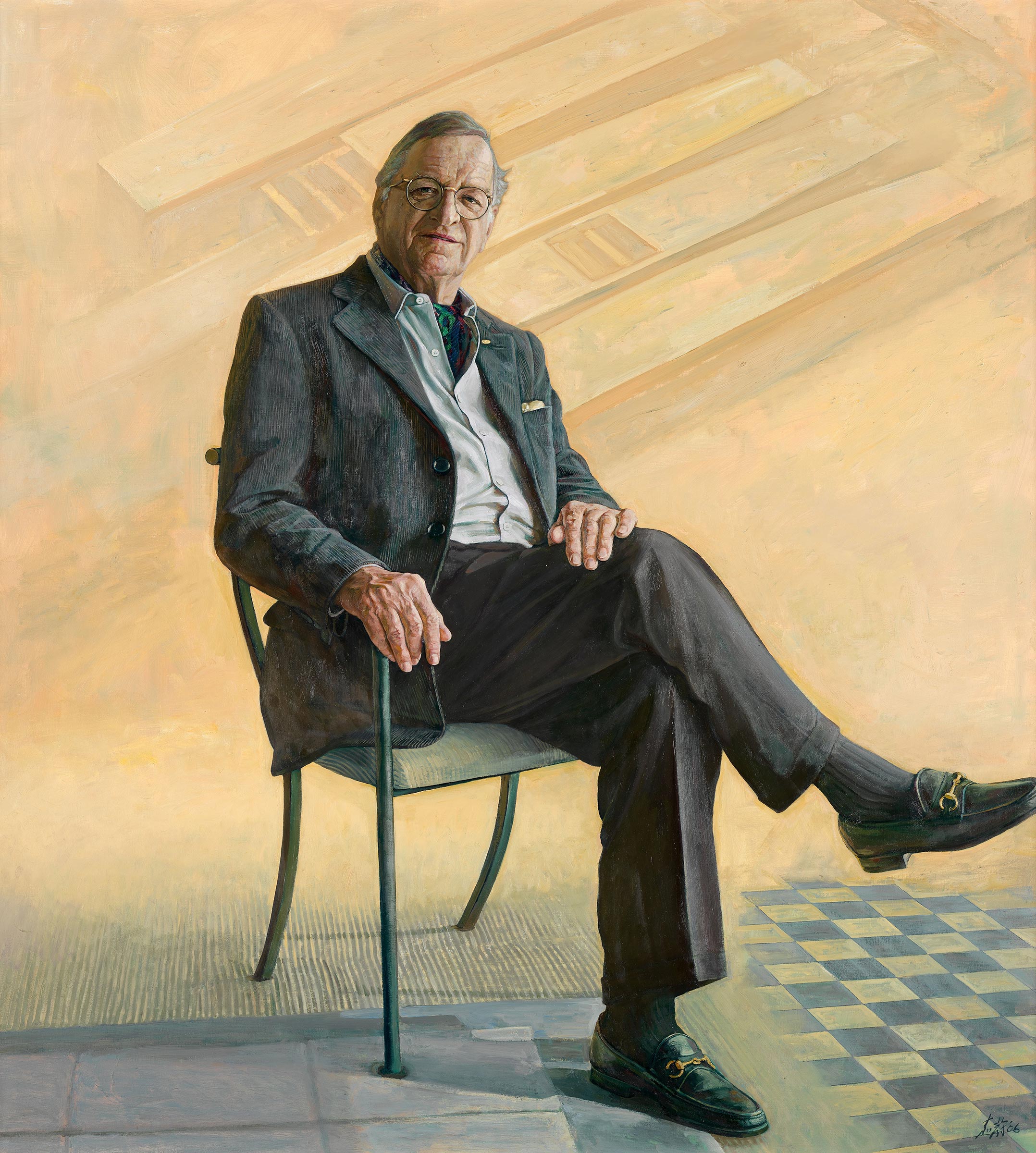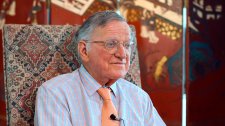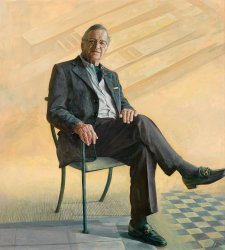The Chairman, Board, Director and all the Staff of the National Portrait Gallery mourn the loss of our Founding Patron L. Gordon Darling AC CMG, who died peacefully in Melbourne this morning. He was 94.
Without the vision, commitment and unfailing support of Gordon Darling – practical, financial, and, above all, moral (for well over the past twenty-five years) – the National Portrait Gallery would never have come into being as it did.
A few months ago, the Gallery was able to pay a fitting tribute to Gordon and Marilyn Darling for all that they have achieved at the Gallery to date. At the same time, commensurate with their vision, the National Portrait Gallery Foundation was launched. Gordon Darling foresaw that this measure will ensure that future generations will build upon the very solid foundations that he and Marilyn Darling have laid.
To Marilyn Darling AC and their families, meanwhile, we extend our most sincere condolences in their loss – a loss in which the whole of their extended National Portrait Gallery family and indeed the Australian public will also share.
Gordon Darling was born in England to an Australian father and an English mother. His Scottish great-grandfather John Darling was a pioneering pastoralist, and his grandfather (also John) was one of the founders, and, later, Chairman from 1907 to 1914, of the Broken Hill Proprietary Company Limited (BHP).
Gordon Darling was educated first at Stowe School, Buckingham. During World War II, he served as a major in the AIF in Papua New Guinea. He sat on the Board of BHP for a record 32 years from 1954. For fifteen years during that period he was also Chairman of Rheem Australia, and of Koitaki Ltd. For twenty years he was also a Director of Elder Smith Goldsbrough Mort Ltd., as well as being on the Council of Geelong Grammar School. He was also a trustee of the World Wildlife Fund from 1978 to 1982.
Gordon Darling was distinguished by an abiding and passionate interest in the visual arts. From 1982 to 1986, he was chairman of the Council of Trustees of the Australian National Gallery (as it was then known, now the National Gallery of Australia).
He was instrumental in establishing the American Friends of the Australian National Gallery (AFANG); the Gordon Darling AFANG Fund, and, at the end of his term as Chairman, Mr. Darling provided funds for the establishment of the Gallery's Gordon Darling Asia Pacific Print Fund, which has since acquired more than 7,000 works of art for the national collection.
In 1991 he established the Gordon Darling Foundation, which has since provided funding and support for a wide range of visual arts projects to more than 700 institutional recipients, an extraordinary record of munificence.
Any one of these distinctions would have been enough to define Gordon Darling as one of Australia's most influential businessmen, and certainly as one of our most effective and generous philanthropists. However, in the years following the Bicentenary in 1988, and his marriage to Marilyn Darling in 1989, Gordon Darling turned his attention to the idea of establishing for Australia a National Portrait Gallery.
To that end he and Marilyn Darling convened an exhibition entitled Uncommon Australians – Towards an Australian Portrait Gallery, which toured throughout Australia in 1992–93. The huge success of that project ensured that, in stages, the National Portrait Gallery was established – at first as a program within the National Library of Australia, and subsequently, from 1998, in Old Parliament House as a separate entity with an impressive series of board member initially chaired by Robert Edwards AO for three years and then by Marilyn Darling AC for eight years. The inaugural director from 1997 to 2010 was Andrew Sayers AM.
With Gordon and Marilyn Darling's unfailing commitment, support and encouragement the NPG quickly established itself as an ambitious collecting institution, and, in 2008, a new building, designed by the Sydney firm of Johnson Pilton Walker, was opened in the Parliamentary Triangle.
For Gordon Darling the National Portrait Gallery would without hesitation, in our splendid building today, adopt the famous epitaph of Sir Christopher Wren in St. Paul's Cathedral: "Si monumentum requiris, circumspice," which means "If you seek his monument, look around you."
Gordon was a great visionary, a great Australian and a great friend. He will be sorely missed.
Dr Helen Nugent AO
Chairman
Angus Trumble
Director














